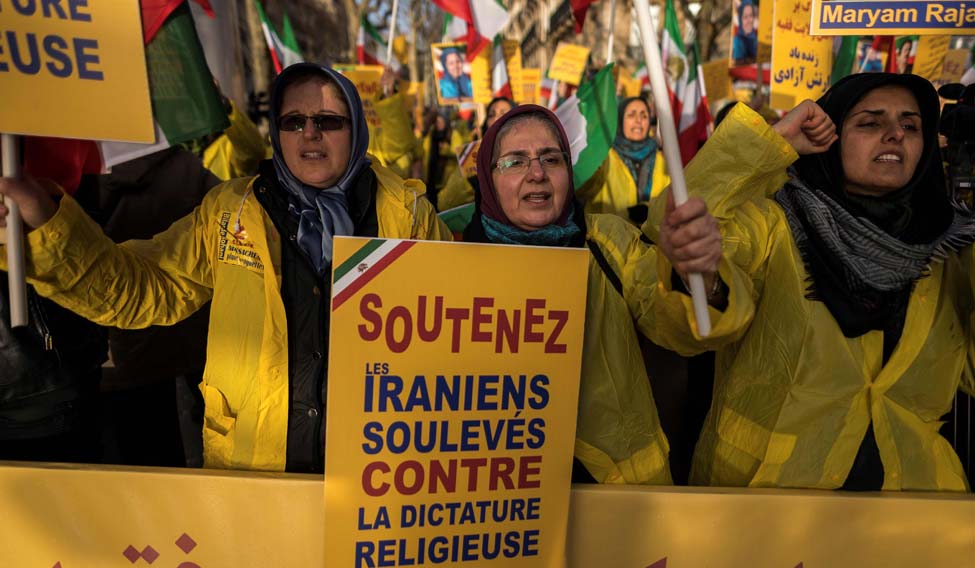The week-long Iranian protests that had resulted in the death of more than 20 people in different parts of Iran appears to have been brought under control on Wednesday. The head of the Iranian Revolutionary Guards (IRG) Major General Mohamad Ali Jafari announced that “sedition” has been “defeated” and "enemies" of Iran, meaning the USA and its regional allies, had engineered the anti-government protests against the theocratic regime.
A tenuous and uneasy peace prevails in the country. While this is not the first such nation-wide protest in Iran, the December 2017 agitation has certain elements that point to the domestic, anti-clergy turbulence that has been building in Iran for some years. While the immediate trigger for the protests were deteriorating socio-economic indicators (price of basic food items such as bread, eggs and such like), increasing levels of oppression and corruption by the ruling elite and their cliques and mounting frustration among the youth who saw no glimmer of hope but the heavy hand of a cheerless theocracy—some of the ideological criticism that came to the fore is instructive.
 C. Uday Bhaskar
C. Uday Bhaskar
Iran since the 1979 revolution, which brought the ayatollahs and the Shia clerics to the political apex, has been dealing with a latent but deeply embedded tension between the larger conservative constituency that supported the regime and the smaller moderate factions who resented the theological severity that was being imposed on the youth. Harsh socio-religious norms manifest in gender discrimination and an inflexible anti-western (read US) political orientation induced a sullen insularity among the urban youth. This demographic mood led to the election of the moderate leader Hassan Rouhani as President, who to his credit managed to close the much contested nuclear deal with the Obama administration in April 2015.
Consequently, the stringent financial sanctions and related penalties against Iran that were imposed in 1979 and progressively tightened after the nuclear issue, were eased and upto $100 billion is estimated to have come back into circulation. However, the perception on the street is that this money was misused by the regime to feather its own pockets, as also support radical anti-Sunni movements in the region, from Syria to Palestine and beyond. Growing wealth inequity among the favored few of Iran’s 82 million citizens and the vast majority who were excluded from such largesse stoked the anger of the protesters, who were seen to have been mobilised through social media and modern communication technology in a relatively spontaneous manner.
In the early days of the week-long protest there was an angry denunciation of the Supreme Leader Ayatollah Khamenei and some protesters demanded a return to a pre-1979 Iranian ethos that was not so inflexibly illiberal and so heavily invested in the power play of political Islam that pitted Iran against its Sunni peers led by Saudi Arabia. Two strands merit notice in relation to the tenor and sub-text of the current protests that have been brought under control. For the first time in post-1979 Iran, the integrity of the theocratic regime is being questioned publicly—and the socio-political implications of this for the theocracy are potentially corrosive. Second, the dissenting Iranian citizen is now forcing the regime to review its foreign policy initiatives and its economic policies and is demanding greater transparency and equity.
Whether such changes will come about as swiftly as the protesters seek remains moot. But it may be surmised that the end-December protest—referred to as ’96 sedition’ (after the Persian year 1396)—is a strong signal to the Iranian leadership to redress many of the domestic issues that are feeding the discord among the youth and the muted liberal constituency.
The Iran-US relationship is pivotal and the Trump determination to roll back every major Obama initiative is cause for concern. The nuclear deal will be reviewed in Washington, DC later in January and it is hoped that there will be no impulsive moves. A troubled Iran will erode regional stability. It merits recall that the UN sanctions on Iran were lifted on January 16, 2016 and hope was in the air in Tehran. That aspiration must be approprately ressurected by the Supreme Leader who authorised General Jafari to declare 'victory.'
Bhaskar is director, Society for Policy Studies, New Delhi
Disclaimer: The views expressed in this article are solely those of the author and do not necessarily represent the views of the publication





